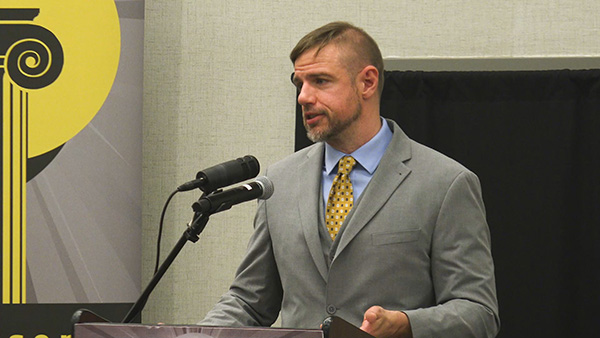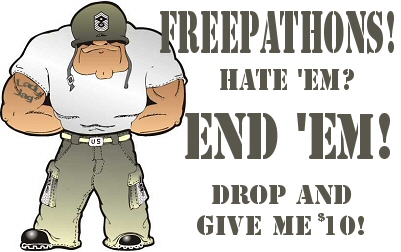Friends are waiting for me in a restaurant. I’m late – it’s taken me a very long time to get ready to come out – but even as I finally make it, even as I see them waving to me from the table, I can’t help myself.
I wave back, then point to the corner of the room where the loos are. Before I have even greeted them or apologised for my lateness, I am in the loo, in front of the mirror, checking my appearance.
I do this on dates too. I have to see how I look before relaxing and enjoying the evening. Beauty anxiety is like that – it creeps up on you silently and slowly, but when it has you in its grip, you’re powerless to resist it.
Some other ways in which it manifests. I’ve bought a mirrored phone case to be able to see how I look all the time. I even do it in public on the street. Nothing even vaguely reflective is off-limits when it comes to checking my appearance: shop windows, pools of water, the wing mirrors of cars.
When I’m in the grip of an anxiety episode, I’m constantly looking at my face, not because I’m vain, nor to confirm that I look great, but because I’m anxious that there is something wrong with it. My hair. My make-up. My skin. Looking in the mirror helps me verify that there is nothing outlandish about the way I look – not for that split second anyway – and gives me a sense of calm.
I give everything a quick once-over – brush my hair, touch up my make-up and reassure myself that I look OK, and that nothing is wrong with me.
I once counted how often I looked at my own reflection in a single day when I’m feeling low: 57 times. Clearly, that’s not normal – surveys have shown that the average person checks their appearance from eight to 16 times a day. If I’m awake for 16 hours out of every 24, I am looking at myself, anxiously, every 17 minutes.
Appearance or beauty anxiety is defined as the ‘excessive worry or fear about one’s physical appearance’, judged by a ten-question self-report scale that measures the cognitive and behavioural aspects of body image anxiety. For me, it’s driven by societal beauty standards and the insecurity they generate.
Anita Bhagwandas says when she is in the grip of beauty anxiety she checks her appearance every 17 minutes
Her anxiety started in childhood when she felt outside what was thought of as 'ideal'
For some, it could manifest in different psychological, emotional and behavioural ways and at its worst can develop into body dysmorphic disorder – a full-blown mental health condition where you are tortured by tiny, in reality often imperceptible, flaws in your appearance.
So, where would be the worst place to work for a woman obsessed with her reflection? You guessed it: glossy fashion magazines. I’m 40, and for the past 15 years I’ve been a beauty journalist and editor at some of the UK’s most prestigious fashion titles including Marie Claire, Stylist and Women’s Health.
A major reason why I’ve spent so much time writing about beauty and investigating our obsession with how we look is because I’ve always struggled with my appearance myself. I am both attracted to and repelled by that world. I’ve also written a book, Ugly, about the impossible standards set by the beauty industry and society more generally.
I might seem like an extreme case, but the problem is not uncommon: a 2020 survey by the UK government found that 61 per cent of adults and 66 per cent of children feel negative or very negative about their body image most of the time.
Even in our image-obsessed world (and my glossy magazine world in particular), I’ve always known that the way I feel, and how I behave, isn’t healthy.
I’ve long recognised my need to monitor this constant checking and what could be triggering it. I know that if I do find something wrong with the way I look, my mood is ruined. I over-react but can’t help it.
Just one glance in those changing room mirrors that show your form from every angle is enough to do it. Yes, I know those mirrors would make even a supermodel loathe how they look, but if I don’t remind myself of this forcefully enough, my mood begins to spiral.
It all began a long time ago. Indeed, I can trace the origins of my beauty anxiety very precisely, to my childhood. My infancy, really. It started at a princess-themed birthday party, aged four. I was queuing up to get a princess dress along with all the other little girls, and the woman doling out the dresses looked me up and down and said: ‘You’re too big for it, here’s a butterfly outfit instead.’
I slunk off into the corner, looking at the others in their pink princess dresses and wondering what was ‘wrong’ with how I looked.
That moment was pivotal; I was aware that I was outside what was thought of as ‘ideal’. As a South Asian child growing up in Wales in the 1990s, I didn’t look like my Barbies, or the Disney princesses in my favourite films, or even like the other children around me. Now, I feel sad for that little girl; I wish there had been the kind of diversity – even in kids’ TV and toys – that we have now. I’m also angry at that woman for speaking to me so carelessly.
For me, beauty anxiety focused on both my body and my face. Throughout my teen years, the girls in magazines, on adverts, in Dawson’s Creek and the other TV shows, were all thin, white and had straight hair, which was the beauty standard of the 1990s. To fit in, I started getting up earlier and earlier to flatten my curls with huge archaic straighteners. On a family trip to London to visit a museum, I made my parents detour to Harrods to pick up a straightening balm I’d read about, to get the sleek silky locks Jennifer Aniston had on Friends.
Today you can jump on YouTube to find a tutorial explaining how to apply make-up step-by-step, but back then, there was no option except the ‘beauty advice’ in teen magazines such as J17 and Mizz, which seldom catered to skin of colour like mine. Neither did the intimidatingly pretty ladies on the beauty counters at department stores, which meant I often made mistakes.
At a friend’s 16th birthday party, I slathered my face in a purple colour corrector, without knowing you had to put foundation on top. When photos of the party were developed, my face was a striking shade of violet, as revealed by the unforgiving glare of the flash. I ripped the pictures up, tears streaming down my face.
Growing up in an era that only celebrated Eurocentric beauty was a huge struggle. But I was also larger than many of my friends in my late teens, around a size 16. Getting clothes to fit was a nightmare; TopShop, Kookai and Miss Selfridge rarely had anything in my size and I’d sit on the sidelines as my friends tried on crop tops and shorts. I had to scour the racks at M&S, and felt deeply self-conscious in new outfits.
If I didn’t like how I looked, I’d invent an excuse not to go out, or even not to go to school. I didn’t tell my parents how I felt about my appearance but bottled it all up, which of course only made it worse.
In hindsight, I wish I’d opened up about it, but I never wanted to bother anyone. I doubt I was alone in this. It was a period where the beauty standard was criminally unforgiving for anyone over a size 10. I joined WeightWatchers at 16, counting complicated points from a book, but seeing only a bleak half-pound loss every week on the scales of doom. It didn’t work. By the time I started university in the mid-2000s, I was a size 18.
The body positivity movement would not hit the mainstream for another five years and, instead, in films, adverts and on TV – from Bridget Jones to Ugly Betty to Mean Girls – body shaming was in. Even back then, my beauty anxiety ebbed and flowed in tandem with my self-esteem – if I was in a good place, my mirror checking would lessen, but when I was feeling low, it would soar back up again.
Surveys have shown the average person checks their appearance from eight to 16 times a day
Anita has tried various techniques including cognitive behavioural therapy to control her anxiety and rationalise negative thoughts about her appearance
I developed a huge paranoia about attending lectures, and became convinced everyone was looking at me because of my size and because I was ugly. Any money I had left over from part-time work I’d spend on beauty products, racking up hundreds of pounds of credit card debt.
Finally, products for my skin tone from US brands such as MAC and NARS began to trickle on to the UK market. Yet this made my obsession with beauty go into overdrive.
I finally had the right shade of foundation, but I was still struggling with my confidence and the way it was so deeply affected by what I saw in the mirror. I left uni and in 2008 began to apply to the beauty departments of women’s magazines, knowing I could feed my obsession there.
Each time I didn’t get a job, I’d immediately blame it on my appearance, feeling like I didn’t look the part for the fancy offices I’d be working in.
There was some truth to that back then – magazine offices were notoriously elitist places to work in the 2010s – but I internalised it all as my personal failure and came down even harder on myself about how I looked.
When I did get a job and entered that hallowed world, the feelings didn’t go away. I never admitted it to anyone, but I was often tormented by my thoughts during product launches and press trips. In my mind, I clearly didn’t fit in with the other beauty journalists, who looked like they had stepped out of the pages of the magazines they worked on. Thinness was an obsession, especially for the already-thin. I felt very alone – no one looked like me.
Today, I’m more aware of the triggers that have me rushing to check my reflection. Still, I get upwards of 300 emails a day, many selling the newest ‘tweakment’, cosmetic procedure or trend, and it’s hard not to absorb the messages they send – that thinner is always better; that wrinkles mean you’re not trying; that you’re not dressed if you leave the house without perfectly-applied lipstick and just-so hair.
In the past few years I’ve done a lot of work on it. I try to catch myself when this beauty anxiety roils up inside, and to be aware of it. I’ve had cognitive behavioural therapy and eye movement desensitisation and reprocessing, a psychotherapy technique that can help people process and recover from traumatic memories big and small. Both have helped. I try to rationalise any negative thoughts I have about my appearance, and to take the emotion out of it. I try to see my difference as a calling card and selling point.
I’ve got a unique look, and that’s a good thing. Recognising that there isn’t one kind of ideal beauty – that we are not all thin, blonde princesses and isn’t that wonderful – has been pivotal. I know how much of an impact social media can have on beauty anxiety and for that reason – amid my more glamorous pictures – I try to post unfiltered selfies in which I look undone and natural. I want to reflect what an unfiltered, un-injected 40-year-old face looks like.
But it’s not always easy. If I’m not careful, those feelings rear up again and I find myself obsessively mirror checking again.
I fully understand the pressures women in particular feel about the crushing weight of beauty standards. I realise that my appearance is the least interesting thing about me, and I am winning the battle against beauty anxiety. But I am also a cautionary tale. And oh, how I wish it had not consumed so much of my life.
Ugly: Why The World Became Beauty Obsessed And How To Break Free by Anita Bhagwandas (£18.99, Blink) is out now.
FIVE SIGNS OF BEAUTY ANXIETY
1. You’re preoccupied with your looks
Do you constantly think about perceived flaws in your appearance – from your skin, weight, hair or body shape?
This could result in frequently checking mirrors or avoiding them altogether because you fear confronting those flaws.
It could also involve an over-reliance on editing tools or filters to modify your appearance in photos before sharing them.
2. You often compare yourself to others
Constantly judging yourself against others, especially on social media, can leave you feeling inadequate. This can also manifest as anxiety over not appearing ‘perfect’ in online photos when compared to others.
3. You avoid social interactions
We all ditch the occasional event because of how we might be feeling, but regularly avoiding social events, gatherings, or activities (such as swimming or a spa) out of fear of how others might perceive your body could signal a deeper issue.
4. You’re obsessed with beauty products
Spending lots of time or money on grooming, make-up or cosmetic treatments seems like a way to solve perceived flaws but it never is. You’ll simply move on to the next ‘flaw’. It can even lead to an obsession with cosmetic surgery and injectables, where the end result is never enough.
5. You often think you’re not attractive
If you’re regularly engaging in harsh self-criticism about your appearance, or feel embarrassed about your body or facial features, this could cause anxiety or depression.
If you find your mood fluctuations are tied to how you see your appearance on any given day, that could be a sign to seek help.

 By Daily Mail (U.S.) | Created at 2024-11-17 17:48:46 | Updated at 2024-11-23 00:08:15
5 days ago
By Daily Mail (U.S.) | Created at 2024-11-17 17:48:46 | Updated at 2024-11-23 00:08:15
5 days ago







